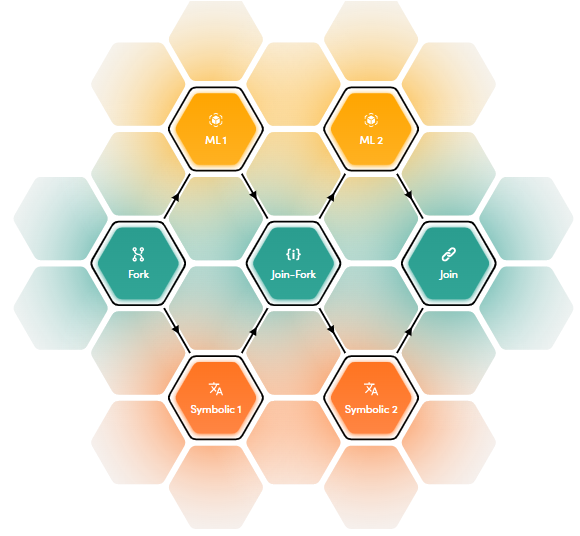Join-Fork operator
The Join-Fork operator combines the functionality of the Join and Fork operators.
Like the Join operator, it receives multiple inputs and merges them, then, like the Fork operator, it propagates its output to all the blocks downstream.
The Join-Fork operator is used when you have to pass the results of a parallel processing, made with two or three models, to another two or three models that have to work in parallel.

The same result can be achieved by putting a Join block and a Fork block one after the other, but Join-Fork helps keep the workflow more compact.
A Join-Fork block must have at least two incoming connections with upstream blocks and two or three outgoing connections with downstream blocks to be valid.
Output
Like for Join, the output of a Join-Fork block is the composition of the outputs of its upstream blocks and has this structure:
{
first block ID:{
first block output body
}
second block ID:{
second block output body
}
[
third block ID:{
third block output body
}
]
}
Block properties
Block properties can be set by editing the block.
A Join-Fork operator block has these properties:
- The unique block ID and the service version, displayed in the title bar (read only, displayed also in the block tooltip in the canvas).
- Block name